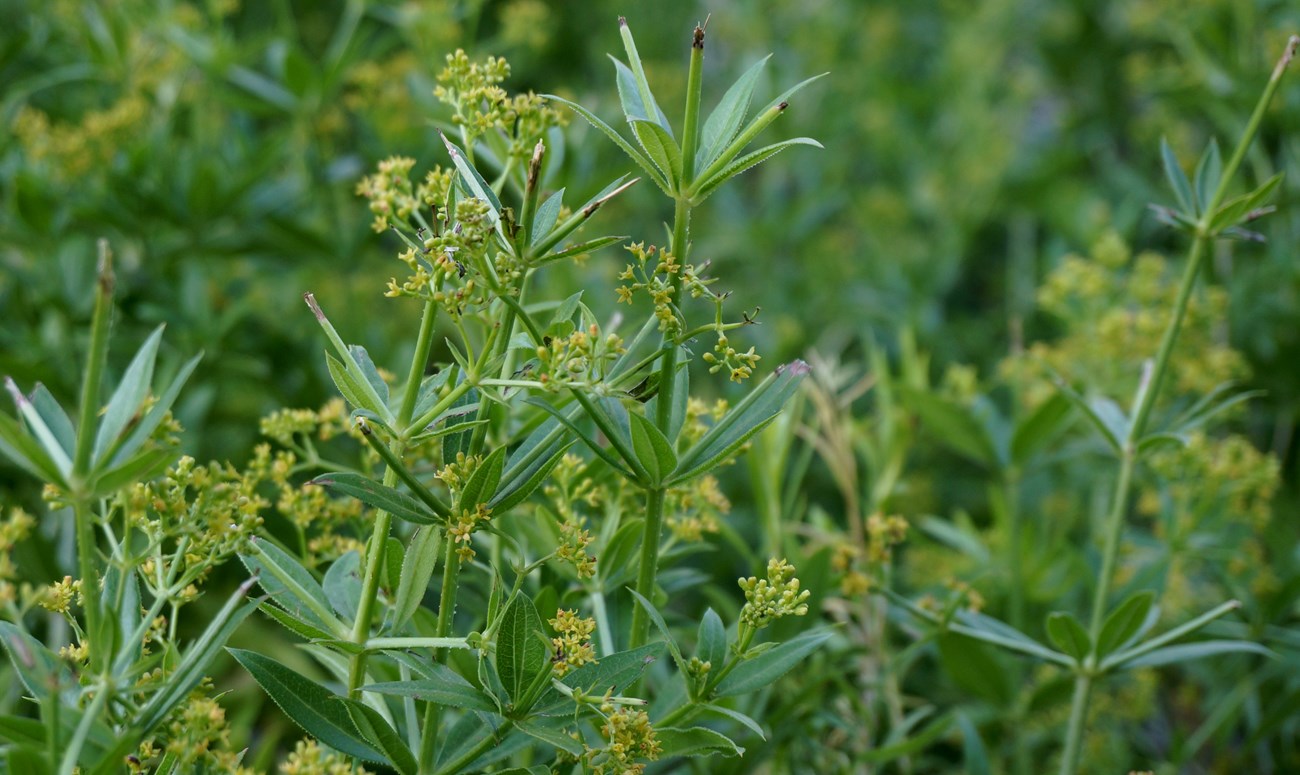Last updated: September 16, 2025
Article
Invasive Exotic Plant Monitoring at Capitol Reef National Park, 2021

Monitoring invasive exotic plants along Pleasant Creek, Capitol Reef National Park. NPS/Amy Washuta
What Are Invasive Exotic Plants?
Invasive exotic plants (IEPs) are non-native species whose introduction to an environment causes (or is likely to cause) economic or environmental harm, or harm to human health. IEPs can alter ecosystems at multiple scales—threatening wildlife, natural landscapes, nd recreational opportunities. They can reproduce prolifically, rapidly colonize new areas, and displace native species.
Invasive plants fill different ecological roles than the native plants they replace. As a result, the needs of species that depended on the native vegetation may go unmet, potentially creating a cascade of ecological effects.
The good news is that if discovered before they have a chance to take hold, IEP populations can be eradicated from parks. Small populations are cheaper and easier to control than large populations. Therefore, early detection is critical.
What Can Be Done?
To provide early warning of weed invasions and help park managers prioritize control efforts, the Northern Colorado Plateau Network (NCPN) monitors invasive exotic plants in eight National Park Service units. First, network and park staff create a list of priority IEPs for each park. Then, on a rotating schedule, a field crew looks for those IEPs along established monitoring routes. Along the routes, they stop and set up plots for additional data collection. The plot data allow network ecologists to estimate trends over time.

Recent Monitoring at Capitol Reef National Park
Key findings
- Tamarisk (Tamarix sp.) was the most prevalent priority IEP species found in monitoring during 2020–2021.
- Along State Route 24, previously identified tamarisk patches have expanded and grown.
- Several additional species are good candidates for control efforts.
IEP monitoring at Capitol Reef NP is done on monitoring routes at that cover State Route 24, the Pleasant Creek cattle trail, Oak Creek cattle trail, the Scenic Drive, and Cathedral Valley Road. From June 5 to July 29, 2020, and May 30 to June 2, 2021, network staff conducted surveys for priority IEP species along the Oak Creek, Pleasant Creek, and State Route 24 monitoring routes. We detected 834 patches of 11 priority species along 68 kilometers (42.2 miles) of roads and trails.
Tamarisk (Tamarix sp.) was the most prevalent priority IEP species on all three routes. On Oak and Pleasant creeks, there were fewer than three patches of all other IEPs. On State Route 24, there were 30 or more patches of Russian olive (Elaeagnus angustifolia), quackgrass (Elymus repens), field bindweed (Convolvulus arvensis), and blue mustard (Chorispora tenella).
There were more patches of tamarisk along State Route 24, and a higher percentage of large patches, than in previous years. This indicates that previously identified IEP patches have expanded and grown.
Field bindweed and Russian olive have both increased along State Route 24 since monitoring began.
IEP priority species were found on 71%, 47%, and 62% of transects along Oak Creek, Pleasant Creek, and State Route 24, respectively. Yellow sweet-clover (Melilotus officinalis) was the most frequently observed IEP on Oak Creek and Pleasant Creek. Percent cover was highest for yellow sweet-clover, Russian thistle (Salsola sp.), and tamarisk on Oak Creek, Pleasant Creek, and State Route 24, respectively.

Management Recommendations
The three patches of Russian olive on Oak Creek could be controlled. The two puncture vine (Tribulus terrestris) patches along Pleasant Creek could be a target for control while they are still limited in extent.
Along State Route 24,
- The two patches of tree-of-heaven (Ailanthus altissima) should be targeted for control.
- Field bindweed continues to increase and could be targeted for control.
- Stork’s bill (Erodium cicutarium) could be considered for inclusion on the priority list for the next monitoring rotation.
- Madder (Rubia tinctoria) has been aggressively and successfully treated by park staff in the past. Three patches were documented in 2021.
- Russian olive continues to increase in both patch numbers and size class; the number of large patches has increased. The number of patches has notably increased downstream from the oxbow.
- Tamarisk remains the most prolific IEP along all three monitoring routes. Previously identified patches have expanded along State Route 24. While this increase is discouraging, continued monitoring will show the effects of both future control efforts and the tamarisk beetle (Diorhabda carinulata) as a biological control agent. Beetle-related tamarisk mortality has required several years of defoliation at Dinosaur National Monument.
The NCPN plans to return to Capitol Reef in 2023 to continue the fourth rotation of invasive plant monitoring.
Past Findings
Invasive Exotic Plant Monitoring at Capitol Reef National Park, 2019 Field Season
Information in this article was summarized from D.W. Perkins, Invasive Exotic Plant Monitoring at Capitol Reef National Park, 2020–2021 Field Seasons.
